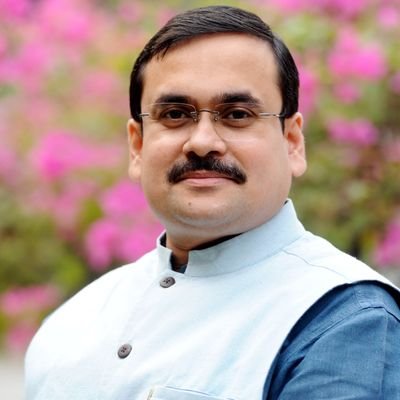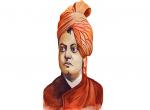In his address on ‘The Influence of Indian Spiritual Thought in England’ on 11th March 1898 at Calcutta Swami Vivekananda distinctly referred to the Indian civilisational reach worldwide. While travelling in the Eastern parts of Asia, he said he was especially struck by the ‘prevalence of Indian spiritual thought in Eastern Asiatic countries.’ ‘You may imagine the surprise’, he told his audience, ‘with which I noticed written on the walls of Chinese and Japanese temples some well-known Sanskrit Mantras’ standing even in the present times as ineradicable testimonies to the ‘missionary zeal displayed’ by our forefathers. The Swami saw such unmistakable signs in the West as well, where going ‘deep below the surface’ he found traces ‘of the same influence still present.’ It was a historical fact, he reminded his listeners, that ‘the spiritual ideas of the Indian people travelled towards both the East and the West in days gone by [and] every body knows now how much the world owes to India’s spirituality, and what a potent factor in the present and the past of humanity have been the spiritual powers of India.’ Discerning the civilisational link and then expounding the civilisational vision came quite naturally to the Swami. In fact it was he who had reintroduced, after a long interregnum, the civilisational perspective in the entire religio-historical discourse in India and had himself contributed in no mean measure towards altering the ‘others’ perception of Indianness.
He had, so to say, re-launched a phase of pro-active Indianisation of the world through the power of Indian thought, Indian spirituality and Indian culture. A true and dynamic recognition of that essential contribution made by the Swami can really be a fitting and lasting tribute to his life and work during the commemoration of his 150th birth anniversary.
It would perhaps be worthwhile for us to recognise the fact that occasions which commemorate lives of great personalities – especially those who have placed India on the intellectual and cultural world map by reviving and re-investigating her civilisational linkages – do offer relevant and timely opportunities for envisaging and planning the creation of lasting edifices that shall have as their objective the promotion and perpetuation of the Indian civilisational identity.
In short, India should make a smart use of these occasions to revamp, and revivify plans for her ‘soft power’ projection. It needs to think big and think civilisational. The plans for celebrating the 150th birth anniversaries of Swami Vivekananda and Tagore, however seems to have overlooked this perspective. While it is fine for domestic purposes to draw up plans to host youth sports competitions, distribute subsidized booklets full of quotes and hold conferences and workshops on rather abstruse metaphysical themes of being and non-being and the poets and monks perspectives on these and on other matters of fundamental human existence, we shall be losing the real perspective and the real game if we do not reach out in a tangible manner beyond our national borders to our larger cultural and civilisational constituency especially in the South East Asian region that the Swami talked about.
Occasions such as these must necessarily serve to consolidate our cultural space; the zone India helped shape across the ages through the non-coercive and persuasive power of her civilisation and thought. And yet when approached with the proposal of establishing a UNESCO Chair in the name of Swami of Vivekananda the Union HRD ministry declares the ‘present non-availability of funds to support’ the demand. A lack of resources does not seem to be the only motivating force; an absence of a civilisational vision is the greater raison for such a stance. An UNESCO Chair may not have a wide reach but its symbolism can and does have a wide effect, perhaps much wider than a donation to the University of Chicago. And let us not delude ourselves that a donation of USD 1.5 million to the University of Chicago by the Indian Ministry of Culture for Vivekananda studies shall serve the purpose of projecting India’s soft power via the Swami’s vision. Such an effort, though useful, shall at best have momentary results with fixed tenured courses, publications and seminars. And in any case the occupant of the chair and the tone and content of the entire discourse is probably to be decided by the recipient and not the disbursing authority. Controlling and setting the pace and pattern of discourse in an intellectual struggle for the control of civilisational space are essential pre-requisites and India should be paying more attention to that key fact.
The Nalanda University project is a case in point where we seem to have stunted our civilisational perspective right from the start. The entire project was perhaps conceived with a broad vision of reviving and projecting India’s civilisational contribution to the world but its ideological domination and contour formation now appears to have been already ceded to a strong Chinese presence within its scheme of things. However, taking advantage of the occasion of these anniversaries, we can still envisage the establishing of a university or the setting up of Vivekananda institutes or Tagore centres worldwide, especially in the geographical region nearest to us – Southeast Asia – to propagate Indian culture, Indian philosophy, yoga, Indian languages etc.
All this has to supplement the ICCR (Indian Council of Cultural Relations) effort and must be much more systematic and sustained implementing a clear long-term strategic objective. Such an effort, well planned, adequately funded, sufficiently publicized and zealously undertaken shall go a long way in consolidating India’s cultural space and shall be a fitting and lasting tribute to the monk’s as well as the poet’s legacy. If the memory and legacy of the 5th century monk Confucius can be deftly used in our neighbourhood to project and propagate a certain way of life, thought and ideology and the brand of his name made use of to create 322 institutes and 369 classrooms in 96 countries what prevents us from utilizing the vibrant message and brand of our own thinkers to popularise the Indian way. The idea must be to create and build such an edifice or network that ought to last at least a century until the next commemoration! At least that is how civilisations are defended or sustained.
The Swami, for example, had himself started a widely read publication – Prabuddha Bharata – that continues to this day, a century or more after its founding while Tagore’s effort at Visva-Bharati was a systematic effort at India’s cultural diffusion and in its heyday under his stewardship attracted some of the best minds from across the globe. Instead of limiting him as a regional figurehead or at the most as a thinker revered in the two halves of Bengal why not seek to revive in a tangible manner the memories and message of his worldwide journeys and in them especially those that he undertook to the East and Southeast.
India, through her ‘democratic exemplarism’ and a rich historical, religious and cultural wealth can and does attract attention as well as appreciation. The power of her huge civilisational repository needs to be systematically harnessed. By taking recourse to the argument that India’s policy especially in this field is a not a reactive one, we have often allowed the big picture and canvass to escape us advantaging other powers in their aggressive drive to solely appropriate a civilisational space that legitimately belongs to us.
The Beijing based official Buddhist Association of China for example, has been active of late in India and busy in the neighbourhood in trying to legitimize Chinese activism and interest in the promotion and preservation of key Buddhist sites and legacies. The association is a crucial instrument in the effectuation of Beijing’s plan of cultural projection, legitimisation and appropriation in the region and beyond. This assumes greater significance especially after last October’s CPC plenum and its decision to aggressively promote ‘national culture’ abroad and institutionalise the process of creating a cultural-hegemon. Be that as it may, we need to focus on the creation of a grand strategy to project Indianness abroad and do it the Indian way. The occasion of these hugely popular anniversaries provide a unique opportunity to do some out of the box thinking and visioning.
Competitions of culture and identity appear to be only growing with time and recognition of that state of build up will help us tune in to its exigencies. Both Swami Vivekananda and Tagore were personalities who essentially symbolized and represented the Indian civilisational ethos and it is in a commemoration of that uniqueness of their being that we can hope to discover an effective instrument for perpetuating the Indian message. One needs to ensure that generations to come continue to read, understand and internalize those very ‘Sanskrit-Mantras’ that had so surprised Vivekananda. And the determination to spread their message and content requires India to evolve an astute and visionary civilisational perspective. The commemorations at a deeper level offer that opportunity over the next few years and a hardening of resolve to initiate such a mega-plan backed by an integrated long-term vision to spread India’s spiritual and civilization perspectives is what is required at the moment.
Published Date : 29th February 2012










Post new comment